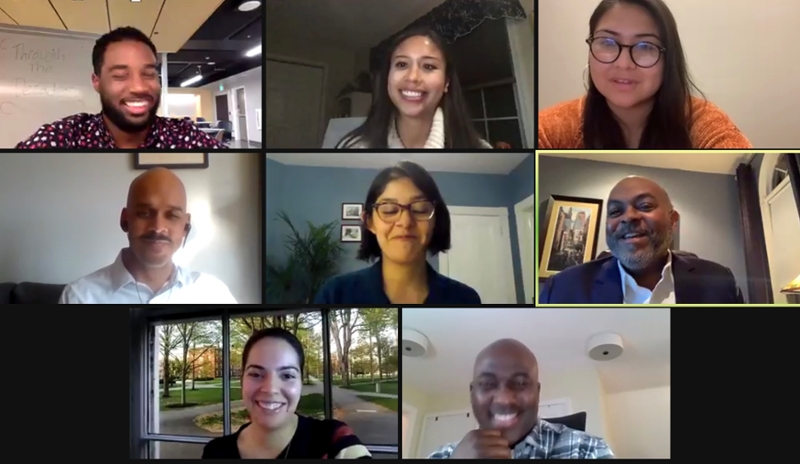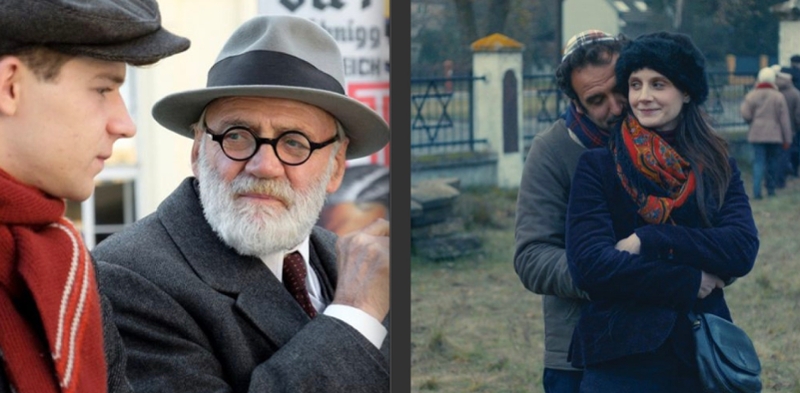Bowdoin’s Khoja-Moolji Discusses New Book on Girls’ Education with Mariya Ilyas ’13
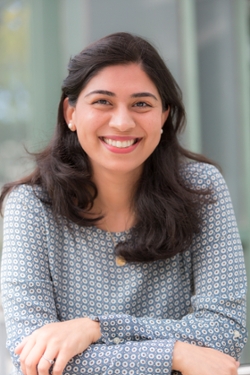
Mariya Ilyas ’13 spoke with Dr. Khoja-Moolji about her new book and her new course this fall.
MI: What inspired you to write the book?
SKM: I had been researching and writing about the convergence on the figure of the girl in international development policy and practice for some time. I noticed that many development campaigns portrayed girls in the global South as not only threatened by poverty, disease, and terrorism, but also as holding the potential to resolve these problems. Education was often presented as that ‘silver bullet’ that would help girls achieve this. So, I wrote about how the burden of development and ending poverty was being shifted to black and brown girls, without any due consideration to how poverty is political and an effect of historical relations of power.
As I did this work, I also noticed that this enticement of the figure of the ‘educated girl’ is not a new phenomenon. We find similar writings about women’s education during the eighteenth and nineteenth centuries in colonial India as well, where colonial administrators, Christian missionaries, as well as Muslim social reformers—for different reasons—claimed that education would save/civilize/reform native women.
So, in the book, I decided to track these myriad articulations of the figure of the ‘educated girl’ in the context of Muslim South Asia during the last 100 years or so. In a way, I wanted to discover her allure and promise.
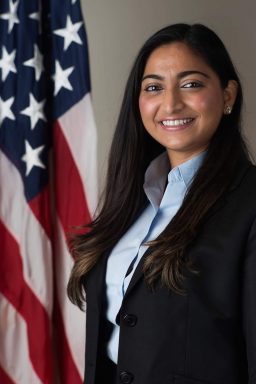
Mariya Ilyas ’13 has started a new job as a foreign service officer with the U.S. Department of State. After graduating from Bowdoin with a math major, she worked as a product analyst for a Boston insurance company, taught English in Turkey on a Fulbright fellowship, and completed a master’s degree at Tufts University’s Fletcher School of Law & Diplomacy.
Ilyas moved to the U.S. from Pakistan when she was eight. “I was inspired to interview Prof. Khoja-Moolji because her areas of research on gender, postcolonial legacies, and Muslim identities resonated with me both personally and academically,” she said.
MI: What did you find?
SKM: I have organized the book into three time-periods—the turn of the twentieth century, the early decades after the political establishment of Pakistan, so the 1950s and 1960s, and the turn of the twenty-first century. I explore a broad range of texts: novels, political speeches, government documents, periodicals, advertisements, television shows, and first-person narratives, with an eye to examining how the figure of the ‘educated girl’ is being conjured: What are rationales given for women’s and girls’ education? What is the ideal curriculum for girls? What are imagined as the most suitable spaces for girls’ education?
I found that calls for girls’ education are often entangled with other societal goals – during the turn of the twentieth century, for instance, women were to be educated so that they could signal a respectable status for their families; after the establishment of Pakistan, women and girls were to be educated in order to become ‘scientifically-inclined mothers’ or ‘daughter-workers’ and by doing so contribute to the development of the state and family; and at the turn of the century, girls are called on to educate themselves and become flexible workers for the neoliberal economy.
Of course, there is a lot more going on in the book. For instance, I discuss how it is crucial to pay attention to social class; that there are different expectations for girls from different economic backgrounds. I also trace the rise of mass schooling as a central institution for disseminating knowledge and how this shift has elevated particular forms of knowledges over others. Finally, there is also a discussion of how over the course of the century different kinds of dispositions and practices of women have come to signify respectability, and how they are linked with advancing the welfare of the patriarchal state and family.
MI: Yes, and one of the contributions of the book is to show how we have moved from “Muslim woman” as a figure that should be saved to the “Muslim girl.” Can you say more about that?
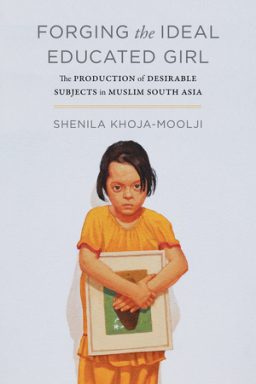
SKM: Yes, one of the lines of inquiry that the book traces is how over the course of the twentieth century ‘the girl’ crystalizes as a key figure for reform, investment, empowerment, and saving. The book shows that whereas during much of the nineteenth century it is the composite figure of the Muslim woman/girl who is to be civilized, rescued, and educated, this figure gets disaggregated over time into the figures of the ‘Muslim woman’ and the ‘Muslim girl,’ with the latter rising to the forefront by the turn of the twenty-first century.
I explain that this shift is taking shape in the context of the rise of mass schooling as well as the peculiar preoccupation of the international development and aid regime with the figure of the girl. Also, crucial to the convergence on the Muslim girl is the increasingly common representation of Muslim women as the new ‘suspect.’ It is only recently that Muslim women are being portrayed as embodying the same type of “threat” that Muslim men have represented for a long time. And so, the Muslim girl is now emerging as a competitor for the salvific rhetoric previously associated with Muslim women only.
MI: That’s a very interesting find! So, what are some of your next projects that we should be on the lookout for?
SKM: I am currently working on a couple of articles and my second book project. In one of the articles, I examine the representation of racialized bodies in menstrual hygiene and female genital mutilation campaigns to understand how Whiteness is produced. In another article, I am working through the archives of a social media celebrity from Pakistan, Qandeel Baloch, who was murdered by her brother a couple of years back. I track how she is taken up by state and media assemblages to re-inscribe patriarchy. I am presenting this article at a conference at Columbia in a few weeks, so I have been engrossed in that these days.
MI: Are you offering any courses at Bowdoin about Muslim girlhood?
SKM: Yes, I have developed a new course entitled, “Saved by the Girl? Politics of Girlhood in International Development,” GSWS 2268. I am really excited about the course because in addition to reading academic texts, we will be engaging with a wide range of cultural productions such as development campaigns on girls’ empowerment, menstrual hygiene, and child marriage; videos such as ‘Girl Rising’ and ‘Queen of Katwe’; young adult novels that feature Muslim girls from Afghanistan and Pakistan; as well as autobiographical texts by girls such as Malala Yousafzai’s ‘I am Malala.’ We will ask questions about what these cultural artifacts do, the kinds of knowledges they produce, the thoughts and actions that they push us toward, as well as those that they make invisible. These explorations will hopefully prompt us towards more nuanced considerations of theories of ‘girlhood,’ ‘culture,’ ‘empowerment,’ ‘rights,’ and ‘human.’
MI: That sounds great! I wish I could return as a student and take your course. Thank you for your time!
SKM: Thank you for having me!

